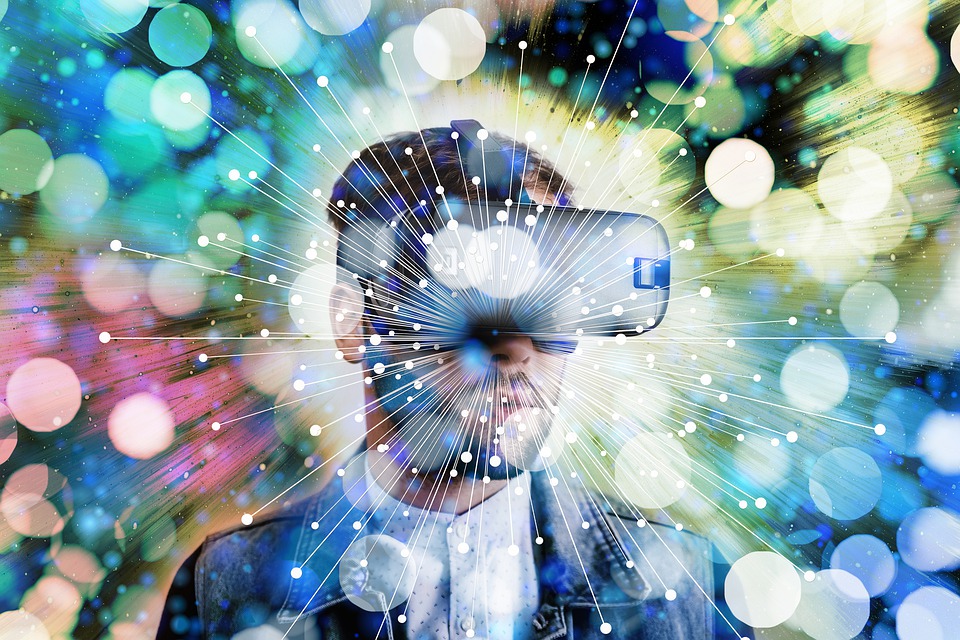What Augmented Reality is and how it works?

September 3, 2020
Augmented Reality lenses are going to revolutionize the world of mobile devices, and very soon it will be enough to wear glasses, we won’t need any other devices. Many of today’s companies, such as Microsoft, Google, Apple, Samsung, have already started using this technology which is not as new as it seems.
Increased reality
It is the incorporation of data and digital information in a real environment, through the recognition of patterns that is done through software. In other words, it is an interactive tool that is taking its first steps around the world and that in a few years, we will see it everywhere, running and advancing, surprising and reaching all disciplines: video games, mass media, architecture, education and even medicine, bringing an unimaginable digital world to our real environment. Its big difference with virtual reality is that it extracts us from our environment to bring us to a reality.
For example, smart glasses could be used to identify people in a meeting, connect to the cloud, and find attendees on social media. Teleconferencing is another area that will likely benefit from these devices, they can also work on wireless connection with other technological elements such as a Smartphone or a portable PC. So what the user views through them can be recorded and stored in a folder on those devices.
The development of these smart glasses are tied to the launch of 5G networks that will make it possible for devices to maintain fast and reliable interactive connections. This is expected to provide high-performance connectivity and low latency as some of the processing will be done in the cloud, allowing companies to create thinner and lighter devices. In fact many of these companies have made contact with brands such as Oackly and RayBan, to work on their RA (augmented reality) glasses models
Today, industrial sectors such as Energy, Construction, Engineering, Medicine, Logistics, Tourism and Military are or plan to use the potential of this technology to transform their business processes into areas that will produce great competitive advantages in the short term.
Augmented Reality Glasses Vs. Virtual Reality Glasses
Augmented reality glasses are not the same as virtual reality glasses. And, in fact, they use technology incompatible with each other.
The main difference between the two is that with the first ones the user perceives reality, but modified or augmented by including in these virtual elements only visible to him. That is, it brings virtual information to the physical world. And that’s what the user sees through their augmented reality glasses.
In the second case, the user immerses him in a completely different reality or world in which there is nothing that is truly around him. Vision a virtual reality that has nothing to do with the physical world in which it is located in the meantime.
What Augmented Reality is for: main uses
Augmented reality in the world of leisure and entertainment
It’s probably the field where augmented reality has the most future. Companies like Microsoft and Sony have been dabbling in this field for years with their video game consoles, the possibilities within the entertainment world are enormous and with attractive proposals for all ages. And not just to play.
The use of augmented reality glasses in the tourism sector
Museums, sites, historic buildings, etc. Visiting these with augmented reality glasses can combine real physical elements with recreations, guided tours of ancient cities and be able to see it with elements typical of its time and for learning its history.
The educational world and augmented reality
The education sector will be another of the great beneficiaries of this technology. It’s one of the fields being explored. And, although it sounds futuristic, it is quite possible that in a few years it will be one of the key elements for learning in schools and universities. In the field of teaching medicine the bones, muscles and tendons of the human body can be recreated. You can even learn more about the geographical features of the landscape.
Companies and their consumer brands
Supermarkets and large consumer goods companies will find a great ally in such devices. You may stop by their stores and see the full features of each item. Or go to a car dealership and look at the body you can see its engine and its specifications.
In fact, Ikea seems to be one of the most interested international brands in it for some time now. The famous Swedish brand uses augmented reality so we can see what its products would look like in our own home.
But the possibilities are very attractive even in a small supermarket. Can you imagine getting detailed information about a food’s nutrients just by looking at it with your augmented reality goggles? Or receive suggestions on how to prepare that particular food product based on issues such as your tastes, regular diet, or lifestyle?
Health and augmented reality
Assisted surgery, the treatment of phobias, Neural Studies are some of the fields in which in terms of physical and mental health is already being worked experimentally with augmented reality.
Military
According to several reports, the U.S. Department of Defense already has augmented reality contact lenses, produced by The Innovega company. Instead of demonstrating text with eye data, these lenses have a filter that allows the person to better focus the images at long and short distances. They also provide a wider-than-normal field of view, and allow an additional image to be displayed on the side. Among the military, it could be used to show the soldier images captured by remotely controlled robots, or for different types of training.
Augmented Reality can be applied to different fields. One of its main uses is to identify and locate everything around us: monuments, shops, restaurants, hotels, etc. Clearly, smart glasses with cameras and cloud connection can provoke contrary reactions among privacy advocates, especially when technology companies are under increasing scrutiny as to how they collect and manage user data. Google Glass, an experimental augmented reality glasses from 2013, quickly submitted to the fear that their camera could be used to disguise videos and photos that violated citizens’ privacy, taking the subject far beyond the technological feat per se.








